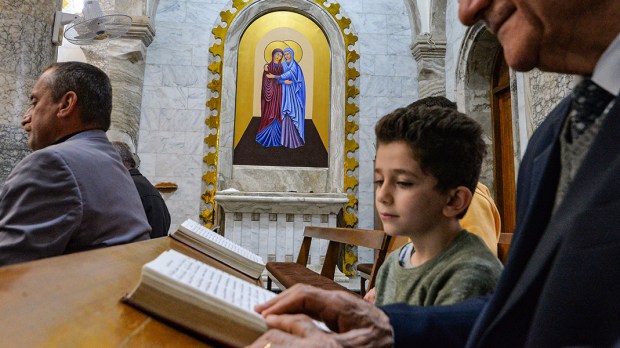On his 33rd apostolic journey out of Italy, Pope Francis will visit the Christian population of Iraq, which has been suffering through successive wars. Learn about the characteristics of this community, which represents less than 2% of the population.
1. They were present before the Muslims
We must remember the biblical roots of this land. Abraham—the father of monotheistic believers—was originally from Ur in Chaldea. Then, the evangelization of Mesopotamia, the present land of Iraq, dates back to the 1st century AD. One of the most important Christian communities—today known as the Chaldean Church—was founded by St. Thomas. Around the year 90, this Catholic community, otherwise known as the Church of the East, gradually grew until it reached its peak in the sixth century, when it sent missionaries to India and China. While the presence of some small Christian churches is explained by some more recent migrations, the vast majority of the Iraqi faithful are directly descended from the people who lived in Mesopotamia prior to the Christian era.
2. There is a mosaic of Christians in Iraq
The reality of Eastern Christians is varied. The Chaldean Church, the largest, is led today by his beatitude Cardinal Louis Raphael Sako. It returned to the bosom of Rome in 1553 when the monk John Simon Soulaka was recognized as Patriarch of the Chaldeans. The present Assyrian Church of the East is made up of Christians who did not recognize Rome. There is also a Syriac Church, today known as the Syriac Orthodox Church, which broke away from Rome and Constantinople very early on because of its affiliation with Nestorianism. It is also known as the Jacobite Church. With Ignatius Andrew Akhidjan, elected patriarch in 1662, a part of this Church became faithful to Rome and took the name of the Syrian Catholic Church. In addition to these four main communities, we note the presence of an Armenian community divided between Orthodox and Catholics, a small Latin Church of Iraq, some Coptic and Protestant faithful, and finally Christians belonging to the Greek Orthodox and Melkite Churches.
3. The number of Christians is ten times less than twenty years ago.
Violence, discrimination and the economic situation have led hundreds of thousands of Iraqis to leave their country. While there were nearly one and a half million Christians in 2000, today there are fewer than 300,000. Some even claim that there are only 150,000 left. However, there are some reasons for hope. While the Nineveh Plain had been completely emptied of its Christians from 2014 to 2017, many refugees have begun to return—40% according to some estimates. Qaraqosh, a city that had 50,000 Christians before Daesh, has recovered more than half of its inhabitants today. However, while some refugee families from abroad have returned to the Nineveh Plain, it is unlikely that the movement will become widespread.
4. Catholics have a significant cultural influence in the country.
The country is still thought to have 250,000 Catholic faithful united with Rome and a little more than 150,000 non-Catholic faithful. The ratio of Catholics per 100 inhabitants thus amounts to 1.5, the Holy See said in a communiqué published on March 2, 2021. The Catholic Churches of Iraq have only 19 bishops, 113 diocesan priests, 40 religious priests and 20 deacons. Lastly, 32 seminarians are awaiting ordination. Although the number of Catholics is relatively small, Msgr. Pascal Gollnisch nevertheless underlines how great their cultural influence is in the country. Many institutions depend on the Catholic Church, which runs no less than 55 primary and nursery schools, 4 secondary schools and 9 universities.
5. Christians have suffered for two decades
The calls for reconciliation and fellowship on the part of current leaders of the churches in Iraq are edifying when one knows the suffering they have had to endure, especially over the past two decades. After the fall of Saddam Hussein in 2003, a great wave of insecurity shook the country. In 2006, 36 churches were attacked, according to a recent ACN report. Two years later, the Chaldean Archbishop of Mosul was assassinated. In 2010, an attack in the Syriac Catholic Cathedral in Baghdad killed 58 people. In 2014, the organization Islamic State invaded the Nineveh Plain, where nearly 150,000 Christians lived. All of them fled to Iraqi Kurdistan.

